This report provides a five year overview of FOI in Victoria from 2014 to 2019. All legislative references are to the FOI Act, unless otherwise stated.
While the FOI Act applies to agencies and Ministers, due to the relatively low number of FOI requests received by Ministers, this report refers to agencies. Therefore, a reference to an agency is also a reference to a Minister.
Key findings in this report from 2014 to 2019 include:
FOI REQUESTS RECEIVED BY AGENCIES
- Victorian government agencies received the second highest number of FOI requests amongst Australian jurisdictions, both in terms of the total number of requests received and per capita;
- The number of FOI requests received by agencies increased and continues to trend upwards (see Figure 1 below);
- Most FOI requests were made by applicants seeking access to documents containing their personal information;
- Victoria Police received the highest number of requests as a single agency; and
- Public health agencies received the highest number of requests as a sector.
Figure 1: Number of FOI requests received in Victoria
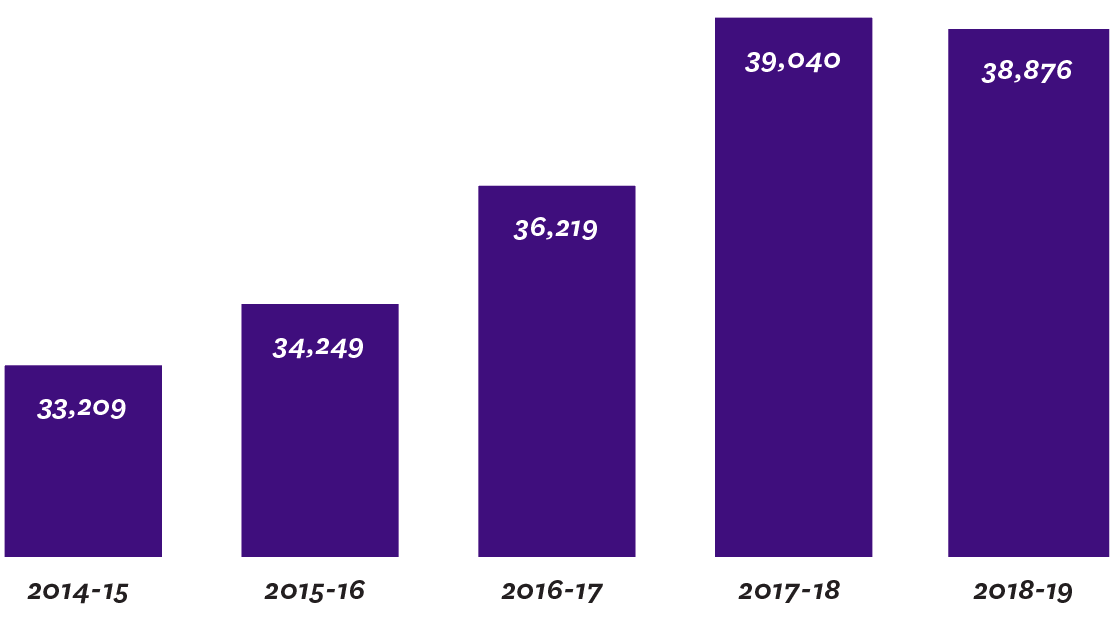
AGENCY DECISION MAKING
- The number of FOI decision makers in Victorian government agencies decreased;
- Despite the reduced number of decision makers, agencies made a record number of FOI decisions;
- Agencies processed most requests the within the statutory timeframe. However, timeliness in decision making decreased over time;
- Most decisions granted access to requested documents in full. However, the percentage of full access decisions decreased over time (see Figure 2 below);
- Where agencies granted access to documents in part, or denied access in full, the exemptions under sections 33(1), 38, 30(1), 31(1) and 35(1) were most commonly applied; and
- The use of sections 25A(1) and 25A(5) by agencies in original FOI decisions increased.
Figure 2: FOI Decisions for the past five years
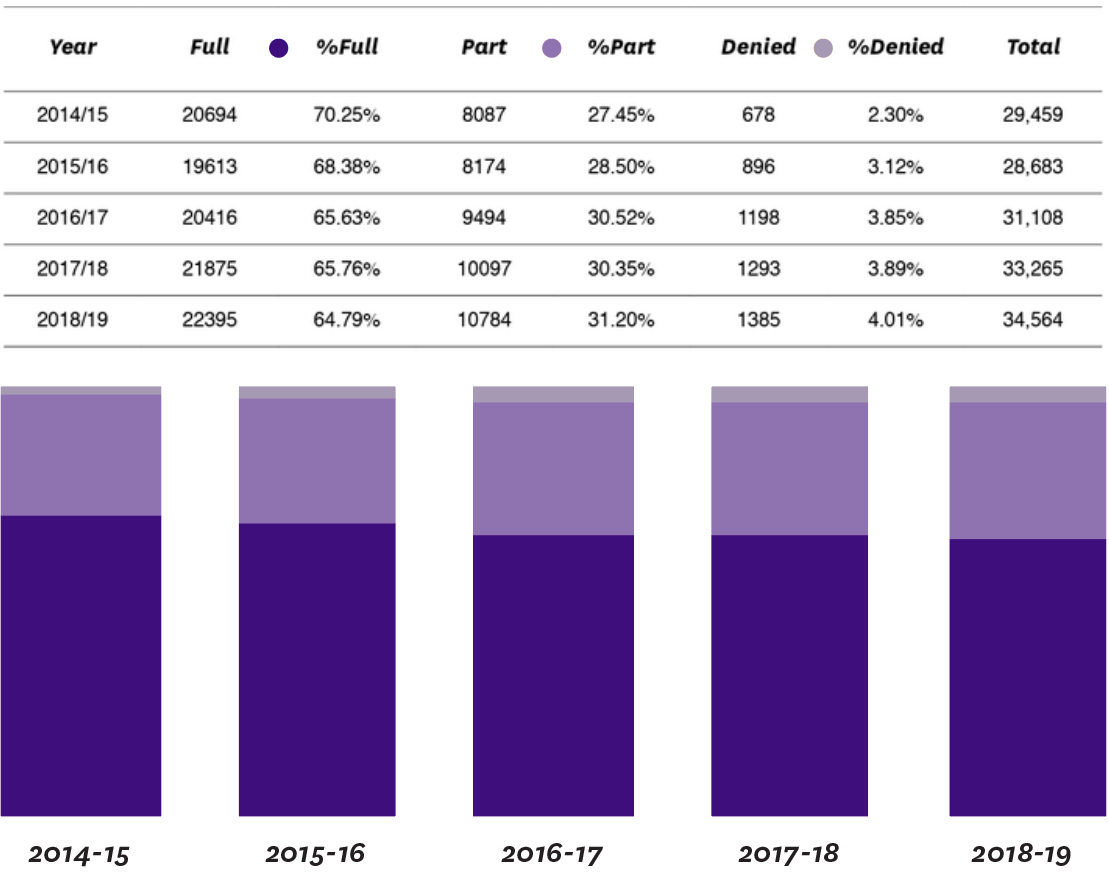
FOI REVIEWS RECEIVED BY OVIC AND VCAT
- The number of reviews received by OVIC 1 and the Victorian Civil and Administrative Tribunal (VCAT) increased (see Figure 3 below);
- The number of review decisions made by OVIC that differed from an agency’s original decision increased from 1 September 2017 with the commencement of OVIC; and
- The number of decisions made by OVIC that granted access to further documents and information increased.
Figure 3: Number of review applications received by OVIC and VCAT
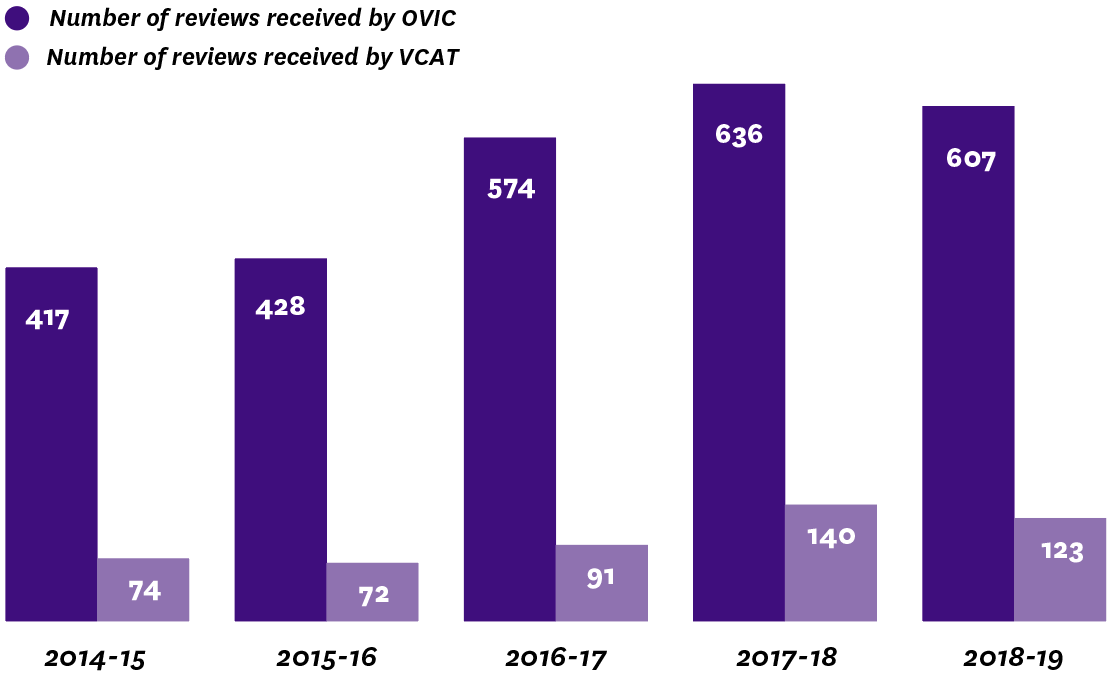
FOI COMPLAINTS RECEIVED BY OVIC
- The number of complaints received by OVIC about agency handling of FOI requests increased (see Figure 4 below).
Figure 4: Number of complaints received by OVIC
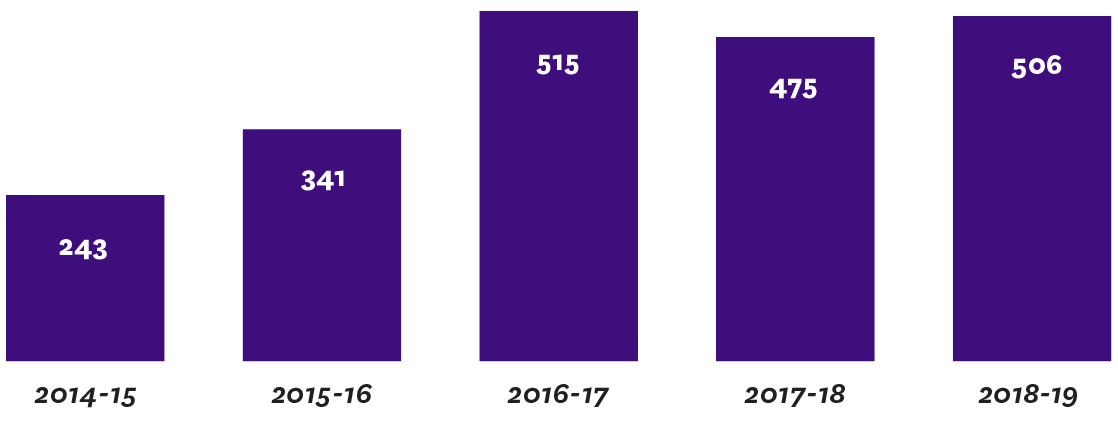
COST OF FOI
- Revenue received by agencies from FOI application fees and access charges increased; and
- The cost to agencies in administering the FOI Act increased (see Figure 5 below).
Figure 5: Revenue received versus overall cost in administering FOI
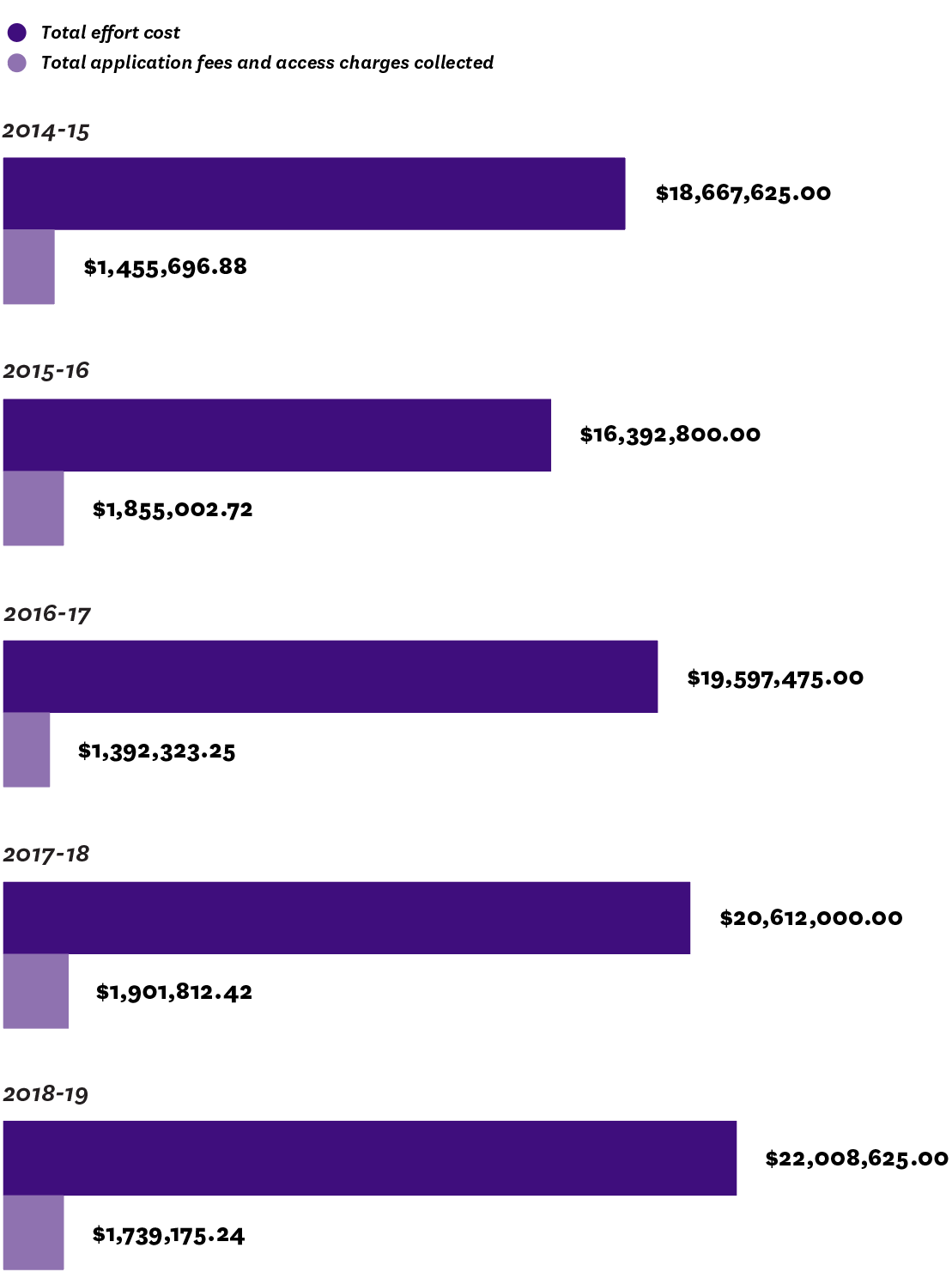
CHALLENGES OF FOI
- Agencies experienced difficulties with:
- staff resourcing, including recruiting and retaining skilled FOI officers;
- reduced statutory timeframe under the FOI Act to process requests;
- obligations under the FOI Act for agencies to consult with third parties about the release of information due to the impact of consulting on staff resources and meeting statutory timeframes; and
- increased FOI workloads due to the increased number of FOI requests received, the number of FOI requests being processed at the same time, the increased number of large and complex FOI requests and the increased volume of records held by agencies in different forms and locations.
- A reference to OVIC may also be a reference to the Office of the Freedom of Information Commissioner, as required. The Victorian Information Commissioner was established under the Freedom of Information Amendment (Office of the Victorian Information Commissioner) Act 2017. The inaugural Victorian Information Commissioner commenced from September 2017. Prior to this, the Office of the Freedom of Information Commissioner was the relevant appeal body.